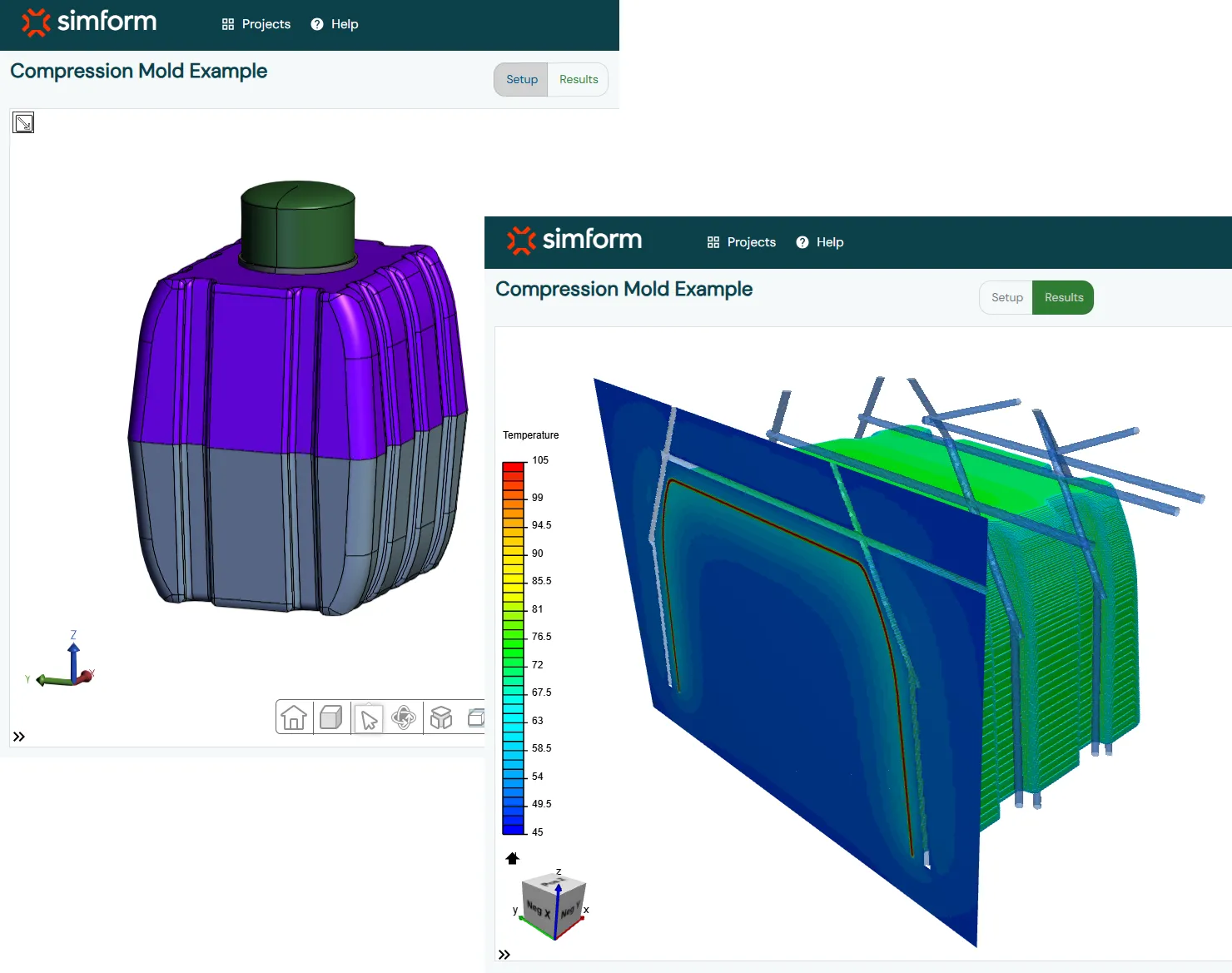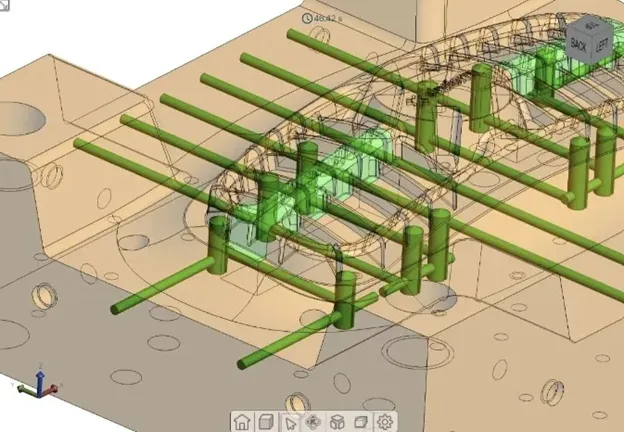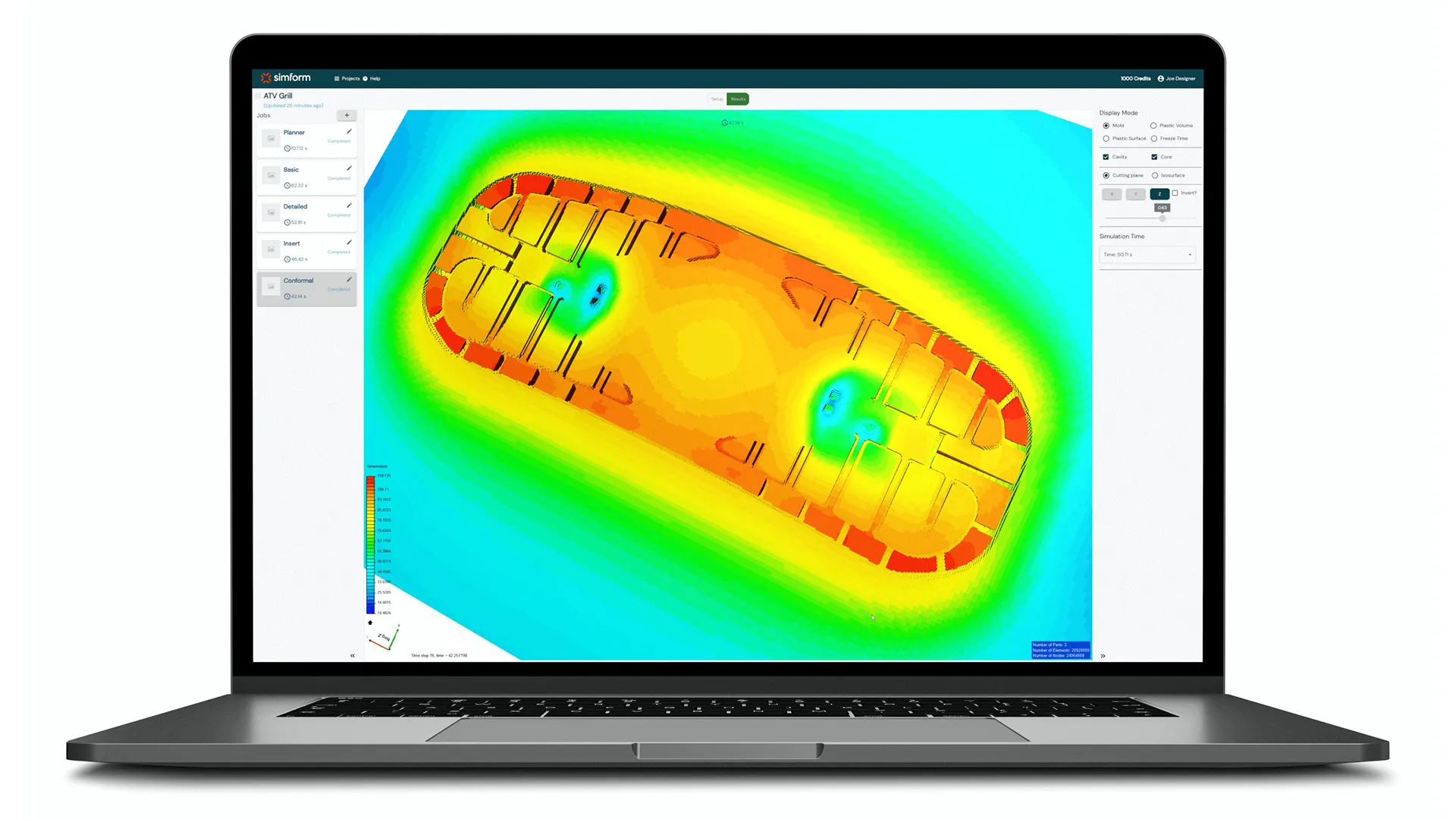by Arnaud Divialle
Maya HTT Introduces SimForm for Compression Molding

SimForm, the premier cloud-based simulation software for mold design, is thrilled to announce a major enhancement to its platform. Initially developed to streamline and accelerate the design of plastic injection molds, SimForm now extends its capabilities to include compression molding tool design. This expansion based on deep insights from customers significantly increases its value to manufacturers and designers globally.
These added functionalities in SimForm give product development teams across industries — from automotive to aerospace and consumer goods — a much-needed tool to validate product and compression mold designs earlier, reduce trial-and-error, and shorten go-to-market timelines for compression molded components.
The software also bridges a major gap in digital tooling workflows by giving engineers the ability to test compression mold behavior under simulated thermal conditions and within a familiar interface. With no guesswork in the compression molding process, teams can move more quickly from concept to production, confident in tooling performance and part reliability.

Leading the Way in Mold Design Innovation
SimForm has revolutionized injection molding by enabling designers to predict temperatures, enhance the quality of molded parts and optimize cooling lines placement. With the new compression molding tool design feature, SimForm continues to set the standard in tool design innovation. Users can now utilize the same intuitive, fast, cloud-based platform to design tools for compression molding, a process essential for producing high-strength, high-performance parts. In this context, SimForm is particularly relevant for very large parts where other mold flow simulation tools struggle.
Mold pressures and temperatures have been shown in research to carefully control the mechanical properties of compression molded plastic parts. Traditional compression molding workflows often rely heavily on physical trials and manual calculations.
Teams can integrate SimForm into the early stages of tool design to identify thermal inconsistencies and optimize tool geometry — before any steel is cut or production begins. This accelerates the compression molding process and helps tooling investments deliver fast ROI with consistent, repeatable performance.

Key Features for Compression Molding
When applied to the process of compression molding, SimForm still displays the same features which are considered critical by its customers.
- Temperature Prediction: Predict temperature evolution within the part and tool over time to identify and avoid potential issues early in the design process. This reduces the tool development cost, lead-time and need for rework, especially in compression molding processes with thermoplastic materials. In such processes, temperature control directly impacts curing quality and material properties.
- User-Friendly Interface: The same easy-to-use interface that has made SimForm popular among injection mold designers is now available for compression molding tool design. It means that the benefits of simulation are now available to tool designers, part designers, tooling engineers and project managers, even if they lack expertise in complex late-stage simulation software. SimForm still requires less than 2 hours of training to get up and running. Its accessibility allows cross-functional teams — including those without Computer-Aided Engineering (CAE) backgrounds — to collaborate more effectively on mold design decisions.
- Rapid Simulations: Very fast simulations provide insights during the design phase to accelerate design iterations and avoid bad surprises during mold trials. With most simulations completing in minutes (thanks to GPU acceleration), teams can iterate quickly and evaluate multiple design variations without disrupting project timelines.
- Optimization Tools: Optimize the placement of cooling channels for uniform temperature distribution and reduced cycle times. This leads to more energy efficient tools with shorter cycle times reducing part manufacturing cost. Teams working with molds for large or geometrically complex parts can use these tools to avoid uneven cooling that causes defects or extends cure times.
A Message from Our Vice-President
“We are excited to expand SimForm’s capabilities to include compression molding tool design,” said Jacob Harris, Vice-President of Software Products at Maya HTT, the 40-years old company behind SimForm. “This addition responds directly to specific user feedback requesting a comprehensive tool for both injection and compression molding. We believe this will greatly enhance our users’ productivity and efficiency, enabling them to bring high-quality products to market faster than ever before.”
More teams can now rely on a single platform to handle efficient production of injection and compression molded parts.
For more information, visit SimForm.